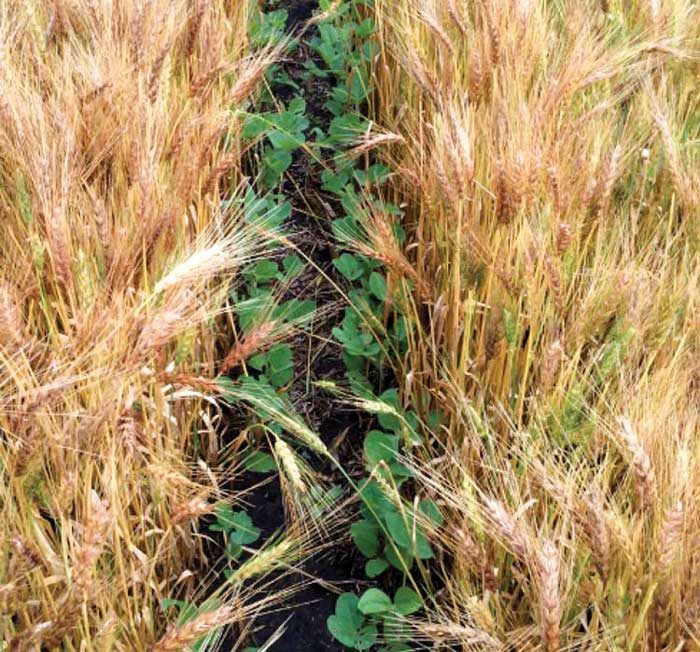No-Till Farmer
Get full access NOW to the most comprehensive, powerful and easy-to-use online resource for no-tillage practices. Just one good idea will pay for your subscription hundreds of times over.

MANAGING MOISTURE. West Union, Iowa, no-tiller Loran Steinlage adapted his drill to roller crimp between rows of growing soybeans after the weather delayed cover crop termination. Thanks to no-till, cover crops and relay cropping, he’s built his soil’s water holding capacity to hold 50% more moisture than neighboring fields.
While the operations of no-tillers Jimmy Emmons and Loran Steinlage are very different, their strategies for managing water are the same.
On Emmons’s family farm in Leedey, Okla., 40 miles below the panhandle of Oklahoma and 35 miles from Texas, water is a precious resource. It’s an arid environment with an average of 20 inches of rainfall per year, and every decision is made with capturing moisture in mind.
Emmons manages 250 head of cattle on 6,000 acres of native rangeland. He also runs a 2,000-acre diverse cropping operation, growing wheat, soybeans, sorghum, irrigated dairy alfalfa hay, sesame, sunflowers, canola and specialty grains.
To the north, Steinlage farms in West Union, Iowa, where 100% of his land is pattern tiled. With average annual rainfall of 36 inches, excess moisture is farmers’ biggest problem.
“We try to catch every raindrop where it falls and utilize that to the maximum…”
The Steinlage family used to run a full dairy livestock operation until a series of personal challenges necessitated a decrease in acreage from 2,500 to 750 acres. Now they grow corn, soybeans, wheat, buckwheat, rye, barley and sunflowers.
Despite the differences in operations and climate, Steinlage and Emmons have found similar solutions to opposing water problems.
Both farmers use no-till, cover crops and relay cropping as moisture management and soil building strategies, and they call each other often to compare notes. Emmons says the biggest quality they share is their approach to water management.
“Whether it’s raining 6 inches or 60 inches…